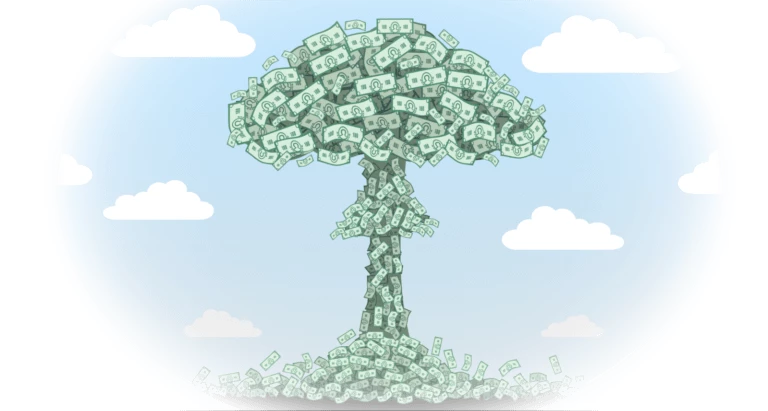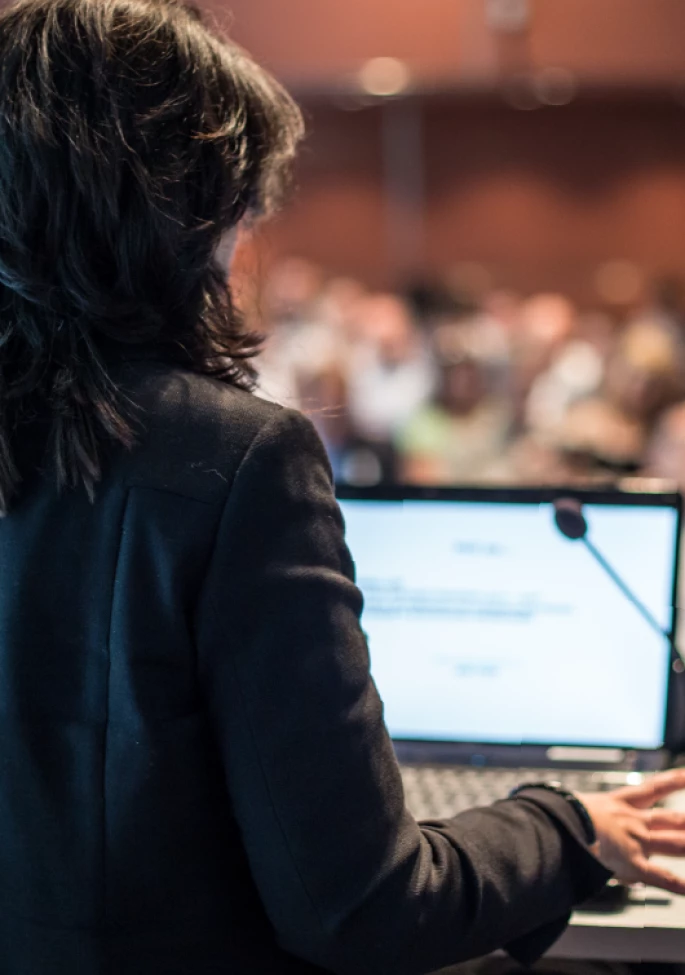There has been a recent increase in the number of nuclear verdicts handed down by jurors, including the largest award from 2019: an eye-popping $8 billion. For defendants, this trend has generated even more uncertainty and anxiety about taking a case to trial.
Technically speaking, a “nuclear verdict” is defined as a verdict in favor of the plaintiff with a damages award that surpasses $10 million—but the term is most accurately used to describe an outcome significantly larger than what anyone expected.
So, what’s causing this unsettling uptick in nuclear verdicts? And who is most vulnerable to such outcomes?
This two-part article aims to answer those questions. Let’s start by going over the key narrative techniques that plaintiffs use to encourage massive verdicts and the trends that have made this narrative even more potent.
Plaintiffs’ “Reptile Strategy”
We really can’t discuss nuclear verdicts without first examining the strategy most responsible for developing the strong emotions—usually fear and/or anger—that drive jurors toward these extreme damage awards.
What Is the Reptile Strategy?
The Reptile Strategy is a plaintiff strategy that uses fear tactics to try to scare jurors into a plaintiff verdict. The name comes from the “lizard brain,” the earliest portion of the brain that evolved from reptiles. It includes the brain stem and cerebellum and is responsible for our “fight-or-flight” response to threats.
When the brain senses danger, it goes into survival mode to protect itself and the community. In such situations, rational thought is often overridden.
One way to ease the perceived threat is to fight back. This forms the foundation of the Reptile Strategy—the theory being that by appealing to the “lizard brain,” plaintiff’s counsel can activate jurors’ survival instincts, provoking responses (and verdicts) based on fear rather than logic and reasoning.
There are three key components to this strategy:
- First, plaintiff’s counsel will focus on a universal “safety rule”—something impossible not to acknowledge, such as: “Safety should always be a top priority.”
- They will then claim the defendant violated that safety rule, and in doing so put everybody’s safety at risk, not just the plaintiff in the case.
- The final step is convincing jurors that they (and they alone) have the power to reduce or eliminate the danger posed by the defendant; naturally, they should exercise this power by finding in favor of the plaintiff and awarding a large amount of monetary damages.
The Reptile Strategy subtly suggests to jurors that awarding high damages will punish the defendant and deter them, and others, from similar behavior.
Attorneys using this strategy may even suggest that without a “proper” verdict and an “appropriate” punishment, the danger to the community will increase. By focusing the case on the community rather than the specific plaintiff—and on the worst possible outcome rather than the plaintiff’s outcome—plaintiff attorneys make it easier for jurors to see themselves as the victim. In essence, the strategy serves as a crafty circumvention of the “Golden Rule” (that you can’t ask jurors to put themselves in the plaintiff’s shoes).
Recent Trends That Strengthen the Reptile Strategy
The Reptile Strategy also seems to be capitalizing on recent trends we’ve noticed among jurors, including a growing anti-corporate/anti-institutional bias, a feeling of being victimized, and a desire to enact social change.
1) Increased Awareness of Misconduct by Large Organizations
At one point, some of the biggest American companies were viewed as the backbone of the U.S., its economy, and its jobs market. However, that view has consistently shifted over time and is part of the reason for nuclear verdicts. We have seen that many prospective jurors enter the courtroom holding different degrees of anti-corporate bias. In fact, in a study conducted in April 2020, we found that over 30% of jurors had negative views of corporations.
Moreover, the media attention given to the bad acts of a few corporations fuels this bias. From Enron, to the more recent Volkswagen emissions scandal, to Wells Fargo wrongfully opening up new accounts, to the pharmaceutical industry’s involvement in the opioid crisis and the price hikes of treatments like EpiPen and AIDS medications, people have become more aware of corporate greed and misconduct.
Not only are they seeing headlines of these bad acts, but television streaming options have given them the opportunity to learn even more through popular documentaries and docuseries such as Dirty Money.
But there isn’t just a bias against large corporations; large educational institutions have been facing their own share of criticism.
Similar to the negative attitudes toward corporate executives’ salaries and bonuses, students have become upset with the salaries of university presidents, football coaches, and basketball coaches as tuition costs continue to rise.1 With prominent scandals at universities like Penn State, Michigan State, Ohio State, the University of Southern California, and recently the University of Michigan, people are starting to believe that these organizations are either carelessly or willfully ignorant of what’s going on within them—or, even worse, that some institutions are more concerned with their own reputation than the well-being of others, and actively cover up or do not report misconduct.
We conducted another survey in May 2020, in which 237 jury-eligible participants responded to several questions assessing their attitudes toward educational institutions. When focusing on the motives of a university, 65% surveyed agreed or strongly agreed with the statement, “Universities make decisions that are driven by securing donations rather than doing what is right by their students.”
Moreover, when asked in two separate questions if they believed that university officials would not cover up events related to 1) allegations of rape of a female student, or 2) sexual abuse of athletes in order to protect themselves or the university, 48% and 51%, respectively, disagreed or strongly disagreed.
These findings suggest there’s a strong negative skepticism among jury eligibles toward universities.
The more universities are caught up in scandals like these, the more the public’s anti-institutional bias will grow, and the less favorably they will judge an administration’s decisions and the motives behind those decisions. For example, as scandals have emerged, some students have demanded university presidents pay back their salary to the university because they were not doing their job adequately.2
Even more recently with the COVID-19 pandemic, we have seen attitudes toward colleges and universities similar to those we have seen toward corporations for years; in the same way that many people are critical of how companies treat employees during hard economic times, many students are now expecting (or even demanding) that universities dip into their “billion-dollar endowments” to reimburse students for the difference in education quality between in-person and online courses.3
In other words, we are seeing general feelings of being taken advantage of by large institutions: businesses and universities alike. Many jurors come in with the idea that Big = Bad, and when such an organization doesn’t meet jurors’ expectations of policing itself, it may be particularly at risk of a plaintiff verdict.
Coupled with the amount of money that corporations and universities have (or are perceived to have), these attitudes can make the Reptile Strategy particularly effective.
Damages aren’t about making the plaintiff whole, but rather are about punishing the defendant to resolve jurors’ fear and correct the defendant’s actions—meaning that even compensatory damages can become a matter of “sending a message.” And if jurors are trying to punish and correct the actions of institutions they think have a lot of money, jurors feel they must award a lot of money to send the desired message.
2) People Feel Victimized
People are reporting stronger feelings of being victimized. A recent poll found that only one-fifth of the sample thought “the system” is working for them, while over half said it is working against them.4 Part of this sentiment is likely due to the growing wealth gap that has received increased attention in recent years, especially given that 80% of people believe that the wealthy have “too much power.”5
This could be a more significant feeling going forward, as our own recent studies have shown that, due to COVID-19, people feel less control over their lives—likely fueled by economic and employment concerns.
Data from our April 2020 survey examined what is known in Psychology as “Locus of Control,” which is the extent that someone believes they control their own life (an internal locus of control) or that external factors control their life (an external locus of control); 63% of our respondents reported an external locus of control, whereas 29% reported an internal locus of control. This skew in the data likely will persist until the pandemic is under control.
This finding is of interest because when people feel like victims of circumstance, they tend to sympathize with the plaintiff’s perspective more easily and see the lawsuit as a way to implement change. As one might imagine, such a trend bolsters the Reptile Strategy—if jurors already feel victimized, a defendant’s conduct can seem more threatening and therefore invite a stronger punishment.
3) Jurors Want to Make a Difference
People want to make a difference, especially Millennials. Sitting as a juror provides that opportunity. Millennials now make up a majority of the workforce, and many see jury service as a way to enact social change—lawsuits can right social wrongs, redistribute wealth, and challenge the status quo. Unfortunately for defendants, a verdict for the plaintiff is seen as a way to fulfill these goals.
The Reptile Strategy preys on this desire, because when jurors buy into the plaintiff arguments, they believe a plaintiff verdict and large damage award can make a lasting difference that will keep others safe.
Plaintiff attorneys might tell jurors they are “guardians of the community.” In one case, plaintiff’s counsel even stated in opening, “You all have been selected because we are confident in your ability to make decisions that could change the world.”
Recent social movements have also highlighted the need to make a change. The Black Lives Matter and #MeToo movements have received a great deal of media coverage, with the former sparking lasting, nationwide protests. As issues involving victimization and social injustice are salient to almost everyone, the desire to be a “guardian of the community” can be particularly strong.
Plaintiffs’ “Bad Company/Institution” Story
As a key element of building up the potency of the Reptile Strategy, plaintiff attorneys have become adept at crafting the “bad company” story, fraught with witnesses providing sound bites that either appear to admit the bad conduct or are easily extrapolated to imply it. And when the bad company story is peppered with bad documents, such as poorly worded emails (often taken out of context), plaintiff attorneys develop motive behind the behavior—that those involved were hiding the conduct to protect themselves or the company’s/institution’s reputation.

Illustration courtesy of IMS Senior Graphic Designer John Ilg.
In the Virginia Tech shootings, for example, the administration was criticized for a failure to warn students of the impending danger, ultimately denying students the choice to seek a safe place to protect themselves. Plaintiffs implied the concern over reputation was what delayed the decision to put the school under lockdown. At trial, this story proved persuasive, and jurors awarded $8 million to two families.
Although this verdict was later overturned by the Virginia Supreme Court, it underscored the fact that bad company/university stories have persuasive appeal with jurors—reinforcing their existing anti-corporate/anti-institutional bias.
There are also two (avoidable) factors that tend to exacerbate this problem for the defense:
1. Absence of a “Good Company/Institution” Story Put Forth by the Defense
Focusing only on trying to rebut the plaintiff’s claims can hurt the defense case and increase the chances of a nuclear verdict. Such a strategy makes the defendant look overly defensive and allows the plaintiff to control the narrative and piece together a bad company/institution story unimpeded.
Instead, counter with a “good company/institution” story: Who is the defendant, and how does it help people? How does it go “above and beyond”?
For example, given jurors’ negative attitudes about universities, it would be important to include affirmative messages about the university—its goals, the students it helps, the community it’s a part of, and the good it does. This will help to humanize the organization and make it look less defensive.
2. Negative Perception of the Corporate/Institutional Representative
Whether jurors buy into a good or bad company/institution story is often driven by their perception of the selected representative. If the representative is perceived as arrogant, uncaring, cagey, etc., our experience has shown that jurors tend to attribute that behavior to the defendant as a whole.
Final Thoughts
The Reptile Strategy is already a difficult plaintiff strategy to overcome, and it has only been empowered by the recent trends we’ve witnessed in jurors’ attitudes. If a plaintiff successfully convinces jurors that they should be fearful for their communities and that sending a strong message is imperative, your client may be hit with a nuclear verdict.
And yet, there are even more factors beyond those discussed here that can drive jurors toward nuclear verdicts. Fortunately, there are also additional strategies to combat them. For both, we invite you to continue on to Part 2.
A version of this article was first published for the National Association of College and University Attorneys Virtual Conference in June 2020.
References
1 O’Hanlon, R. (2017, June 14). University Presidents Get Richer, Students Pay More. Pacific Standard.https://psmag.com/education/university-presidents-get-richer-students-pay-more-57674
2 Thompson, C. (2016, December 20). Penn State to Graham Spanier: Pay us back. PennLive Patriot News.https://www.pennlive.com/news/2016/12/penn_state_launches_legal_coun.html
3 Giordano, C. (2020, May 26). Georgetown University Student Demands Tuition Refund for COVID Losses. Chief Investment Officer.https://www.ai-cio.com/news/georgetown-university-student-demands-tuition-refund-covid-losses/
4 Edelman (2019). 2019 Edelman Trust Barometer. January 20, 2019. https://www.edelman.com/sites/g/files/aatuss191/files/2019-02/2019_Edelman_Trust_Barometer_Global_Report.pdf
5 Igielnik, R. (2019). 70% of Americans say U.S. Economic System Unfairly Favors the Powerful. Pew Research Center. https://www.pewresearch.org/fact-tank/2020/01/09/70-of-americans-say-u-s-economic-system-unfairly-favors-the-powerful/








